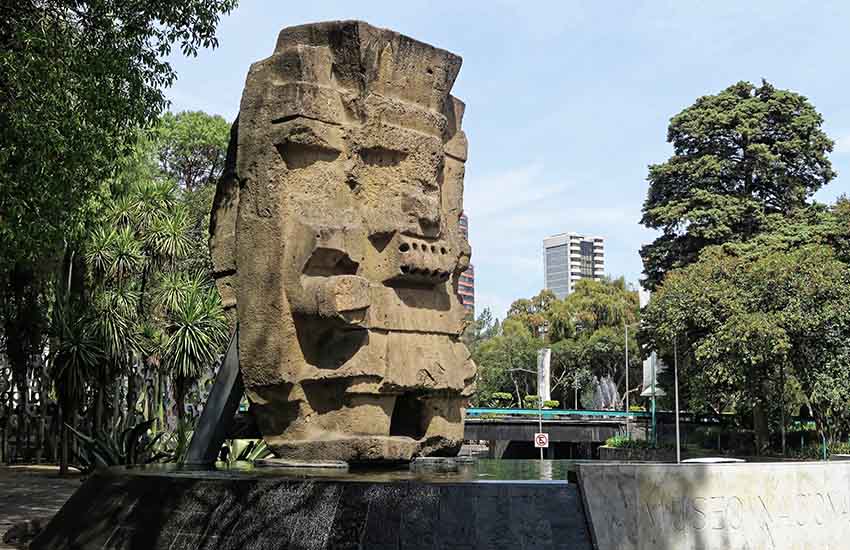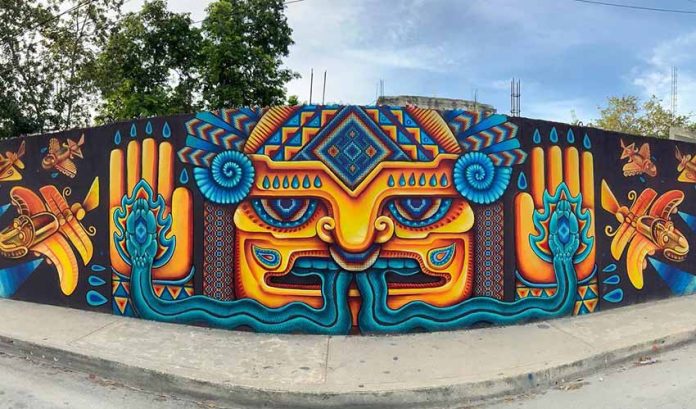“Tlaloc is showing off again,” you will hear in my house when a good thunderstorm hits Mexico City.
Yes, it’s the 21st century, but it turns out we are not the only ones who “invoke” the god Tlaloc as we go into the annual start of the rainy season. With almost half the country now officially in drought, even the newspaper El Financiero appealed to Tlaloc in an April 4 headline.
Mexico’s seasonal consciousness is not divided into winter and summer but rather dry and rainy seasons, with the latter as much anticipated as spring is up north. From prehistory to the present, the country’s agriculture has always been largely dependent on rain, as there is relatively little surface water for irrigation. This makes the various rain gods extremely important.
These gods go by many names: Chaac for the Mayans, (Pitao) Cocijo for the Zapotecs, Dzahui for the Mixteca, and more. He is one of the oldest gods of the Mesoamerican pantheons, dating back at least to the pre-Classic period.

This period coincides with the domestication of corn and the dominance of the Olmecs. Olmec and later depictions are fairly similar, with common elements such as jaguar fangs and associations with mountains and caves instead of the sky.
There is debate as to whether this is due to the Olmec version being adapted by later cultures or a more complicated interchange of ideas. Either way, Tlaloc can be found all over Mesoamerica among diverse cultures such as those in Tula, Teotihuacan, Monte Alban and El Tajín. But the best-known name is Tlaloc of the Nahuatl-speaking Aztecs.
For simplicity’s sake, we’ll focus on the Tlaloc of the Mexica civilization. The god of rain, lightning and thunder, his name comes from the words for Earth (tlalli) and nectar (octli).
Tlaloc is identified with goggle-like rings around his eyes and large feline fangs. The “goggles” were originally snakes coiled around the eyes, an image that got stylized into circles.
Most often he is depicted as a singular male, but there are depictions of him with multiple faces and multiple bodies, generally to represent his different roles and attributes and his relationships with other gods and goddesses. Tlaloc could be temperamental: giving good rains one year, a drought the next and flooding after that, making currying this god’s favor essential.
There were many, many temples and shrines dedicated to this god, but perhaps the best example of his importance to the Mexica was the fact that the Templo Mayor (Main Temple) of the capital Tenochtilán had dual sanctuaries — one to Huitzilopochtli, the deity associated with war, and the other to Tlaloc. This is because the basis of this empire’s wealth and power relied equally on warfare and agriculture.
Mountaintops and caves were other places of veneration. For the Valley of Mexico, the most important of these is still called Mount Tlaloc, on the eastern edge of the valley.
This eastern orientation is important. The god’s home, Tlalocan, was said to be a paradise somewhere to the east. It’s an interesting idea because the vast majority of Mexico’s moisture indeed comes from the east, from the Gulf of Mexico.

Of course, major events in honor of Tlaloc occurred as the rainy season approached, but rituals were done and offerings were made year-round. He received objects of gold, quetzal feathers and, even more importantly, jade — extremely precious and rare in Mesoamerica.
Sacrifices were common too, including of jaguars, to which he was related, and, yes, of humans as well. The association with jaguar and human sacrifice echoes in some indigenous communities to this day, with the so-called “tiger” dances to ask for good rains.
Of course, the Spanish worked to eliminate belief in Tlaloc, but they only partially succeeded. Subtle references to him can be found in some early colonial churches, and isolated communities kept a number of rituals, with or without a Catholic veneer.
But perhaps the best testimony to Tlaloc’s survival in the Mexican psyche comes with a “comeback” that dates at least to the 20th century. After centuries of trying to eliminate the indigenous aspect of Mexico, post-Revolution radicals looked to incorporate it into a new identity for the country.
Art, especially muralism, played a key role. Tlaloc as allegory appears in art by Saturnino Herrán, Rivera, José Clemente Orozco, Rufino Tamayo, David Alfaro Siqueiros, Carlos Merica, Frida Kahlo, Juan O’Gorman, José Chavez Morado, Francisco Eppens and others.
But the most celebrated example is a work by Diego Rivera that is all but unknown to foreigners. Tucked into a remote corner of Chapultepec Park in Mexico City is a 30-meter pool and fountain whose bottom is covered with a relief image of the god, covered in symbols related to the history and mythology of Mexico.
The artwork is so large that it cannot be viewed in its entirety except by air, a nod to the budding aviation industry of the 1950s. Reinterpretations of the image continue to this day in various kinds of artworks, including those commissioned by public water utilities.
I should mention here the famous Tlaloc image in front of the National Museum of Anthropology. The 168-ton stone statue was originally in Coatlinchan, but federal authorities decided to move it in 1964. It is said that as soon as the statue entered the city proper, a large thunderstorm struck, indicating the god’s displeasure. To this day, people in Coatlinchan are bitter at the loss of the artifact.

Images of Tlaloc today can be found in many places, including tattoos, logos for water companies and fire stations and even foreign video games. Ceremonies to the god have endured, and in some cases resurfaced as cultural and/or spiritual exercises.
For the Nahuas of the Sierra de Texcoco, the god’s image has been melded with that of the Mexica ruler Nezahualcoyotl, who created water distribution systems in this area on the northeast edge of the Valley of Mexico.
In April 2022, several municipalities in Nuevo León sponsored such a ritual, reporting that it did indeed rain hours afterward.
Leigh Thelmadatter arrived in Mexico 18 years ago and fell in love with the land and the culture in particular its handcrafts and art. She is the author of Mexican Cartonería: Paper, Paste and Fiesta (Schiffer 2019). Her culture column appears regularly on Mexico News Daily.
